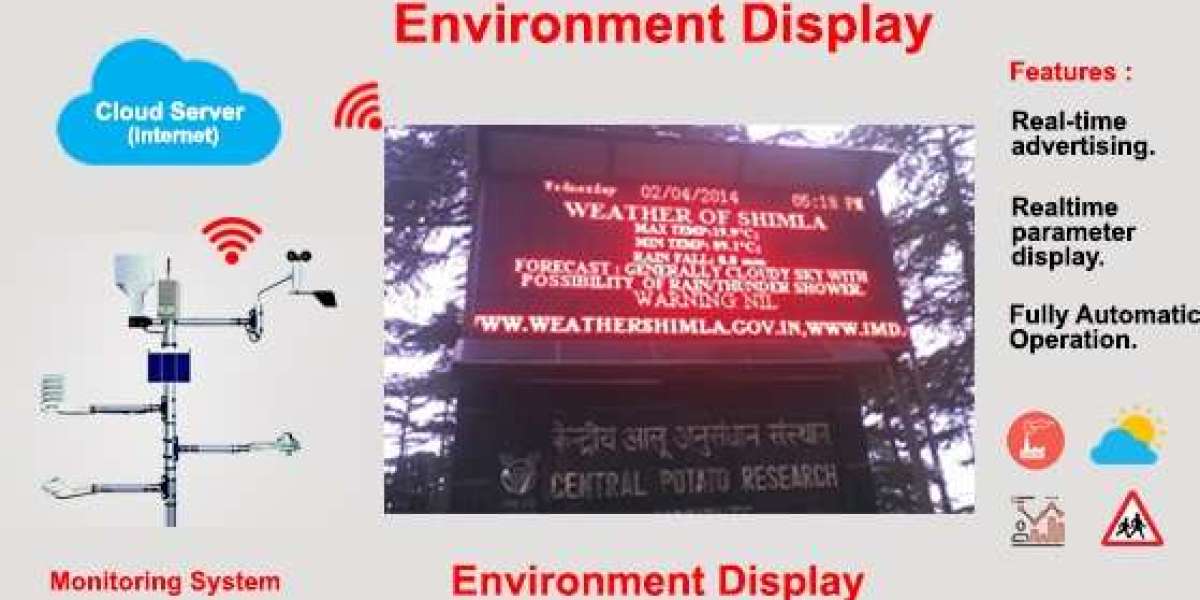In a world increasingly focused on creating smart, responsive, and adaptive environments, environment displays have emerged as key components in both workspaces and public areas. By providing real-time information on factors like air quality, temperature, occupancy, and energy usage, environment displays empower users to make informed decisions and organizations to foster healthier, more efficient, and sustainable spaces.
What are Environment Displays?
Environment displays are digital screens or dashboards that show real-time environmental metrics. Commonly used metrics include indoor temperature, humidity, CO₂ levels, and air quality index (AQI), often gathered from IoT sensors throughout a building or facility. These displays may also show occupancy rates, energy consumption, and lighting information, creating an accessible overview of conditions in the immediate area.
These displays are particularly valuable in workspaces, educational facilities, healthcare settings, and high-traffic public areas where air quality and comfort play a crucial role in well-being and productivity.
Benefits of Environment Displays
- Promotes Health and Well-Being
Displays showing air quality, temperature, and humidity can help people make decisions about their immediate surroundings. If a meeting room has high CO₂ levels, for instance, occupants can open windows, turn on ventilation, or step out to avoid fatigue and increase focus.
- Boosts Sustainability Efforts
Energy usage data on environment displays encourages users to be mindful of energy consumption. By showing real-time data on energy consumption, lighting, or heating, organizations can promote energy-saving behaviors and track how small adjustments can reduce environmental impact.
- Increases Transparency and Trust
Posting environmental data publicly, especially in the workplace, shows a commitment to transparency and employee well-being. People can feel assured that the organization is actively monitoring and improving conditions, fostering a positive and inclusive environment.
- Supports Productivity and Comfort
Studies have shown that comfortable temperatures and good air quality significantly impact productivity. By displaying information that allows users to adjust conditions, organizations can help employees maintain focus and well-being.
- Encourages Safe Practices in Shared Spaces
With occupancy metrics on display, users can make informed decisions about entering a space. If a room is near capacity, people can choose an alternative location, helping to reduce overcrowding—a valuable feature for health and safety measures.
Applications of Environment Displays
- Corporate Workspaces
Many organizations use environment displays in office lobbies, hallways, and meeting rooms to inform employees about the building’s air quality, energy use, and occupancy. Some advanced displays even provide data on room booking status, helping employees find available meeting spaces without disrupting others.
- Educational Institutions
Schools and universities can use environment displays to monitor and communicate air quality, CO₂ levels, and occupancy data, particularly in classrooms and lecture halls. Given the importance of air quality in learning environments, these displays can contribute to healthier, more effective study spaces.
- Healthcare Facilities
Hospitals and clinics can benefit from environment displays by ensuring optimal air quality and temperature control in patient rooms and waiting areas. By providing patients and staff with transparency on these conditions, healthcare facilities can improve comfort and reduce the spread of airborne contaminants.
- Public Spaces and Transportation Hubs
Environment displays in areas like airports, train stations, and malls can display air quality and occupancy data to help visitors manage their routes and timing. This enhances user experience and reduces bottlenecks in high-traffic areas.
- Smart Homes and Green Buildings
In sustainable and smart home designs, environment displays show residents their energy usage, air quality, and even solar power production. With this data readily available, users can make adjustments to live in an eco-friendly and energy-conscious way.
Future Trends in Environment Displays
With the growing integration of AI and machine learning, environment displays will likely become even more dynamic and personalized. Future displays may use predictive analytics to provide suggestions for optimal conditions based on the time of day, occupancy trends, and weather forecasts. Additionally, integrating environment displays with mobile apps could allow users to monitor conditions and receive alerts directly to their devices, enhancing both convenience and engagement.


